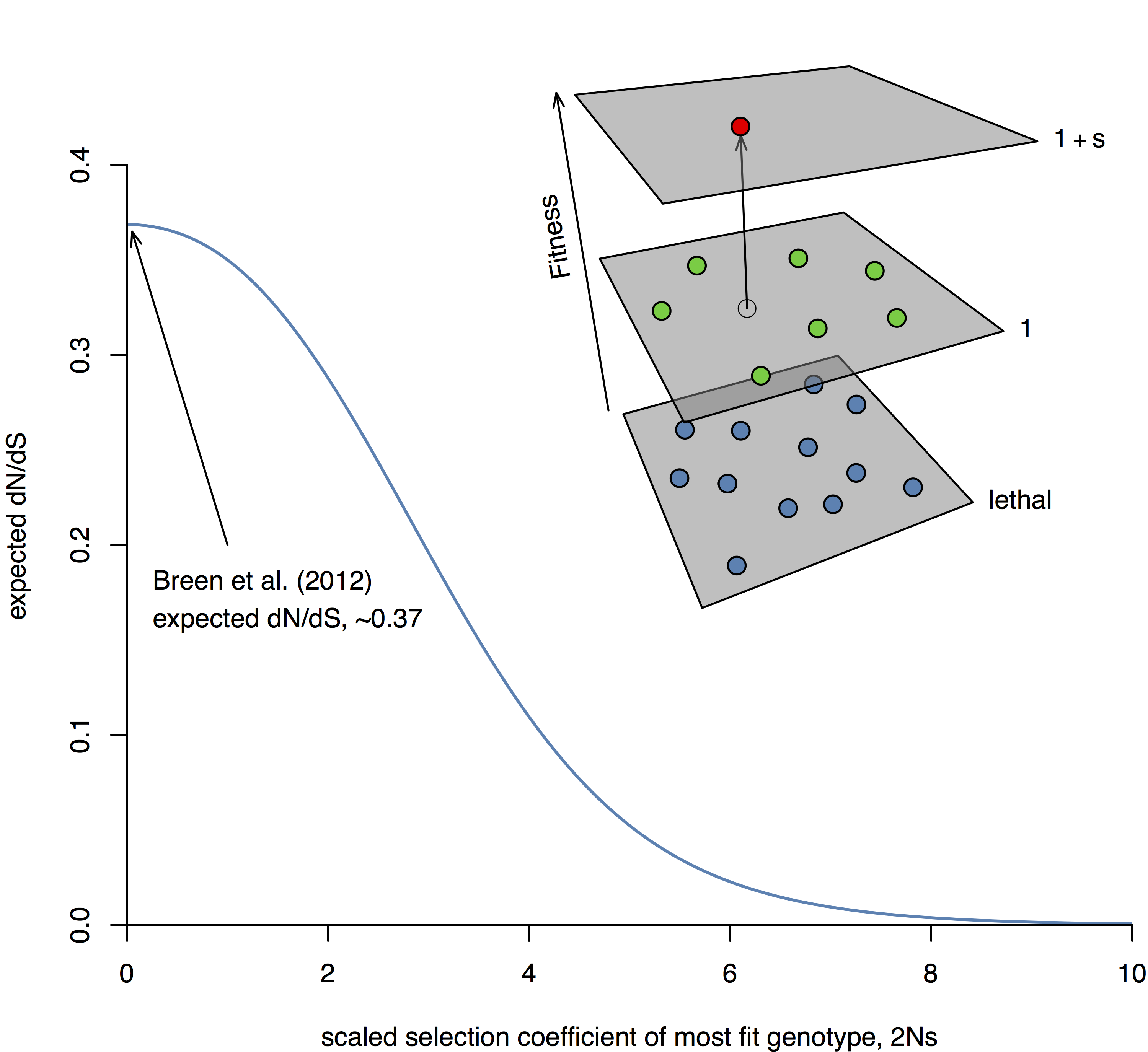Abstract
An important question in molecular evolution is whether an amino acid that occurs at a given site makes an independent contribution to fitness, or whether its contribution depends on the state of other sites in the organism’s genome, a phenomenon known as epistasis. Breen and colleagues recently argued that epistasis must be “pervasive throughout protein evolution” because the observed ratio between the per-site rates of non-synonymous and synonymous substitutions (dN/dS) is much lower than would be expected in the absence of epistasis. However, when calculating the expected dN/dS ratio in the absence of epistasis, Breen et al. assumed that all amino acids observed at a given position in a protein alignment have equal fitness. Here, we relax this unrealistic assumption and show that any dN/dS value can in principle be achieved at a site, without epistasis; furthermore, for all nuclear and chloroplast genes in the Breen et al. data set, we show that the observed dN/dS values and the observed patterns of amino-acid diversity at each site are jointly consistent with a non-epistatic model of protein evolution.
Commentaries
We discussed the rationale behind writing this reply in Nature and posting it on in a guest post on Haldane's Sieve.
For completeness, the response from Breen and colleagues to our concerns is also linked here.
